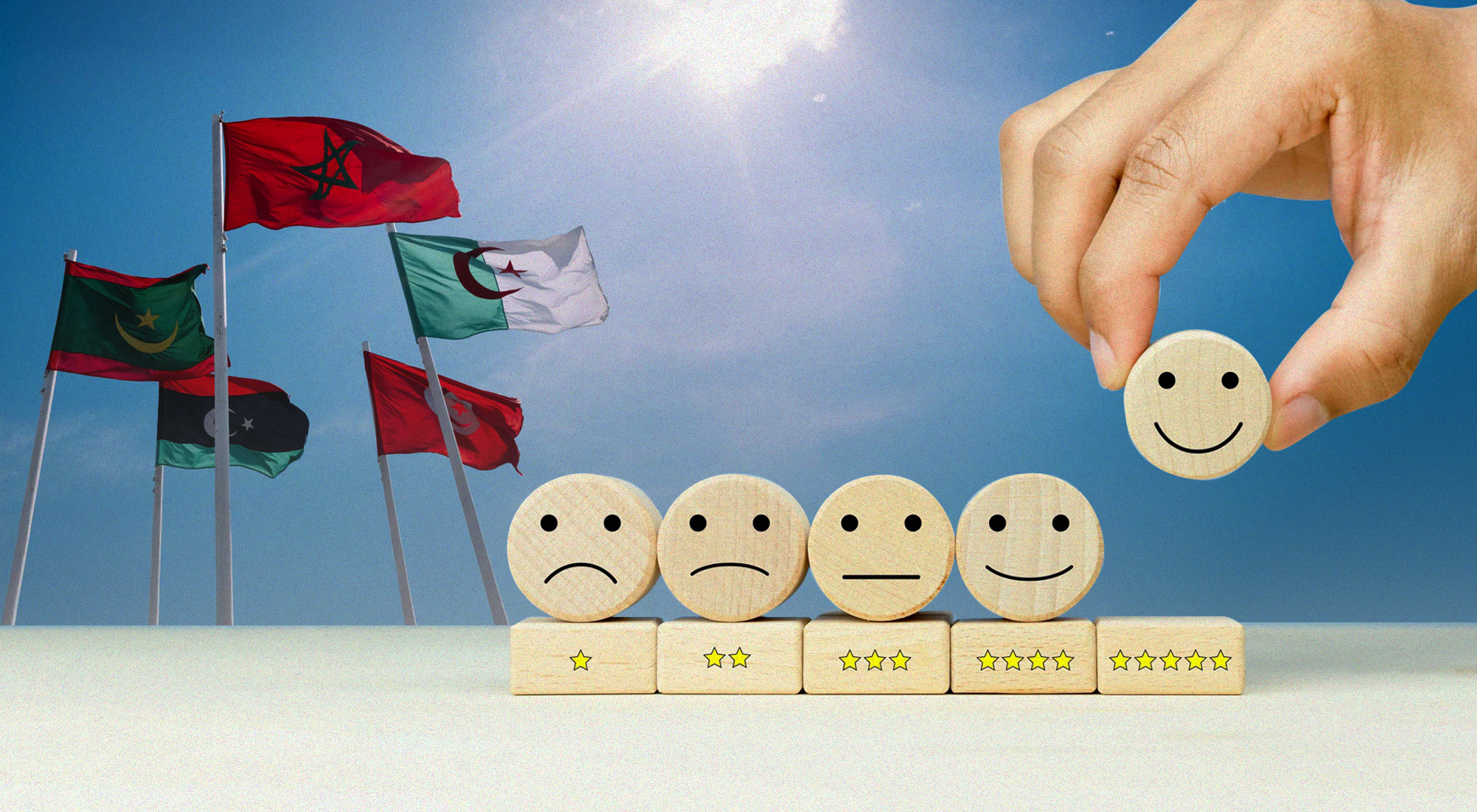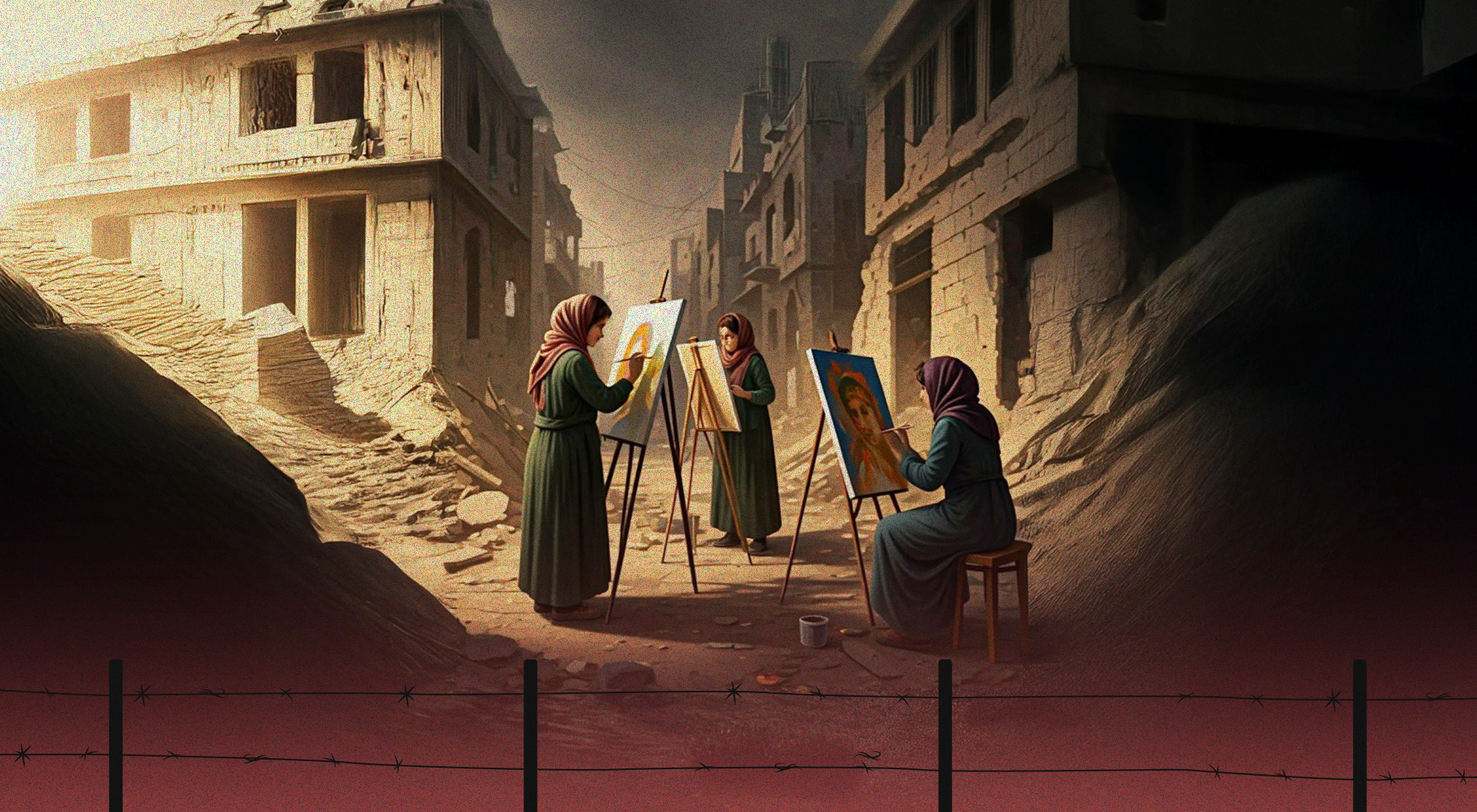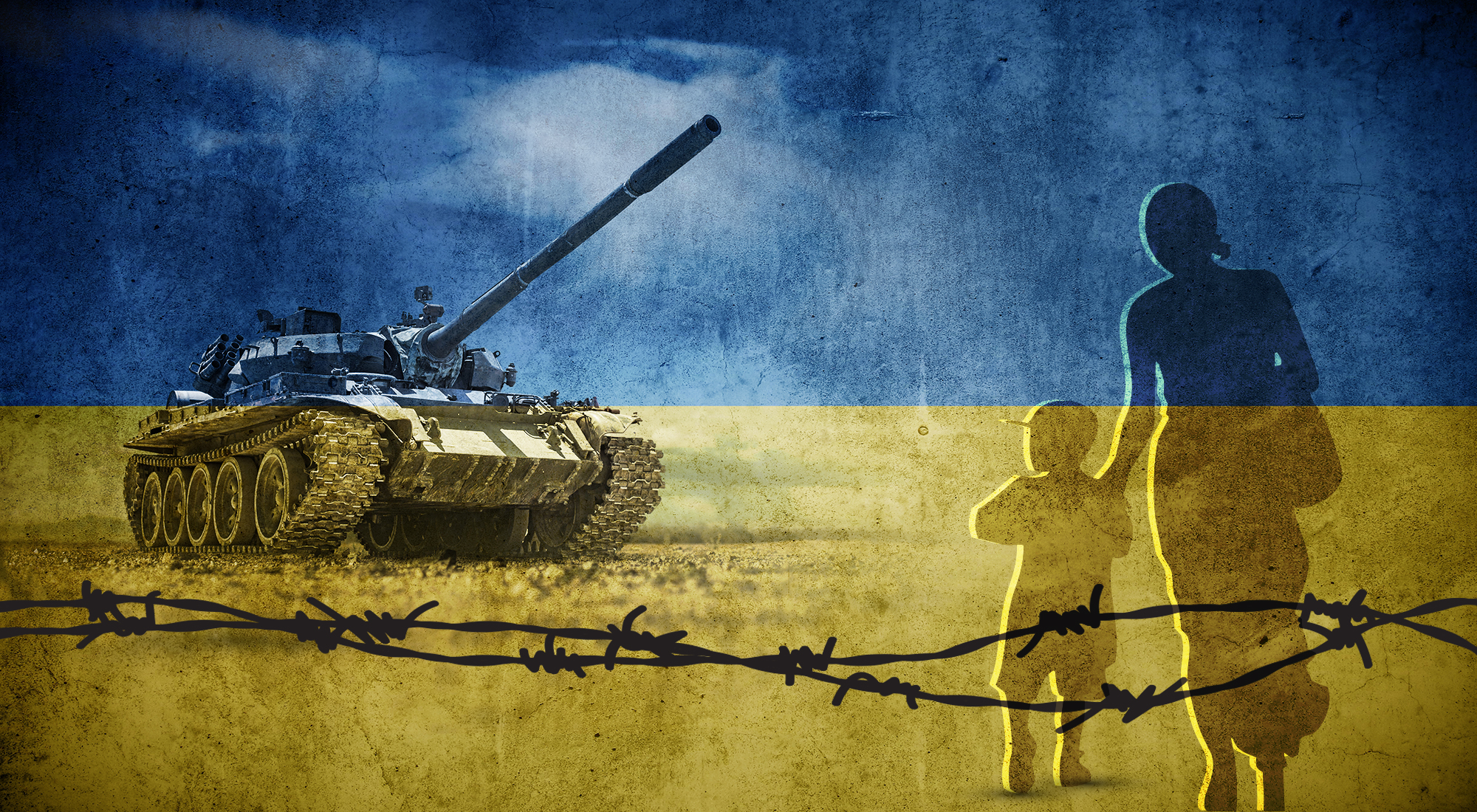Amid international concerns about the spread of the Coronavirus (COVID-19) outbreak that originated in China, little attention has been paid to the virus’s potential impact on the already desperate circumstances faced by displaced populations and people of concern in the Middle East. The immediacy of the risk is particularly evident in the case of those refugees forced to escape the recent intense fighting in the Idlib province in Syria. Displaced people seeking sanctuary and aid now also have to contend with neighboring states’ hostile policies based not only on fears of the spread of COVID-19, but also popular prejudices based on misconceptions and inadequate healthcare provision.
This paper analyses the current status of the spread of COVID-19 in the region, before assessing the impact of disease concerns on the status of regional refugees and shortcomings in the responses of regional governments towards the issue. It is argued that effective responses to the threat posed by COVID-19 to displaced persons in the Middle East will require much more effective coordination and contingency planning among the entire range of international, regional and local actors and healthcare and humanitarian providers.
COVID-19 and the current status of regional refugees
As of March 7, the global number of confirmed cases of COVID-19 has surpassed 100,000, according to the World Health Organization (WHO). A couple of days prior to the unnerving benchmark, the UN Humanitarian Chief, Mark Lowcock, released USD 15 million from the Central Emergency Response Fund (CERF) to help fund vulnerable countries’ efforts to contain the COVID-19 virus, as the WHO upgraded the global risk of the COVID-19 outbreak to very high; its top level of risk assessment.
Since late December 2019, an efflux of COVID-19 cases outside of China has affected numerous countries around the world, with Italy quarantining up to 25 percent of its population and residents in its northern regions and many European countries following suit by re-establishing border controls. The Italian Prime Minister, Giuseppe Conte, also announced the closure of schools, gyms, museums, nightclubs and other venues across the whole country.
The outbreak, however, threatens to be devastating for vulnerable populations around the world, with asylum-seekers, refugees and internally displaced persons escaping conflict and strife being especially at risk. The potential for yet another humanitarian disaster also includes instable countries with inadequate governance and poor infrastructure leaving them virtually unequipped for coping with the danger of an increase in viral infections.
In the Middle East region, displaced populations and people of concern in Iran, Afghanistan, Iraq and Lebanon are particularly vulnerable. Roughly 9 million people of concern have found refuge from war and conflict between Syria, Iraq, Turkey and Lebanon. Refugee movements along irregular migration routes and across shared borders has meant that displaced people have also spilled into neighboring countries. Iran itself hosts nearly one million refugees, mostly from neighboring Afghanistan.
Refugees, internally displaced people and other populations of concern are, however, often excluded from disaster and epidemic preparedness planning by international organizations, governmental bodies and local authorities.
Measures as simple as information sharing, community education on the potential outbreak preparedness, and proactive action can be quite difficult for vulnerable and hard-to-reach populations to access, especially in situations of protracted conflict.
Moreover, in refugee-hosting countries in the more developed parts of the world, the media has incited rhetoric depicting asylum-seekers and displaced populations as potential carriers of the virus and a health risk for the host-countries. In the latest wave of arrivals to Europe, popular prejudice has been particularly evident in both Greece and Italy as well as in other European Union member states.
Politicians in European countries on the frontline of the refugee crisis have already invoked the specter of asylum seekers and migrants carrying the virus across borders to drum up support for hardline migration policies. But public health experts believe the greatest risk is that posed to refugee and migrant communities themselves, thereby compounding the threats of instability, sporadic access to healthcare, and now the growing threat of stigmatization.

The problem: inadequate readiness to contain and mitigate COVID-19
In the Middle East region, borders between countries have not always been effectively managed, with many remaining porous and crisscrossed by informal routes taken by refugees, asylum-seekers and economic migrants.
Countries within the region affected by conflict, such as Syria, Iraq, Libya and Yemen, virtually have no mechanisms to monitor and control the entry and flow into their national territories, already presenting a challenge in curbing the spread of the virus in the region, especially among the vulnerable populations that move between these borders in an informal manner.
The on-ground situation in some regional countries with poor governance and socio-political crises also threaten to exacerbate the pressure already faced by the obsolete and inadequate public health systems that vulnerable populations have to rely on.
In Lebanon, for instance, despite substantial improvements made following the country’s 2005 reforms[1], the health system remains highly fragmented, with the governmental bodies acting as the official regulators while taking a hands-off approach that leaves private providers effectively in control of the health sector, according to the WHO. The main features of the market are the public, the private and the public-private mix, none of which have developed an adequate response to the COVID-19 outbreak thus far.
Lebanon registered the first COVID-19 case on 21 February of a Lebanese citizen returning from the city of Qom in central Iran. And while there are no reports that the refugee populations within Lebanon have been hit by the COVID-19 virus, the poor response to the outbreak in urban areas serves as a potential indicator of how devastating the outbreak could be among the country’s displaced populations. The country has done little to beef up its healthcare system following events in 2013 when an influx of Syrian refugees strained overburdened sanitary infrastructure and overstretched Lebanese public health services, ultimately leading to an increase in the incidence of reported Hepatitis A virus (HAV) cases.[2]
While the healthcare system in Turkey has been far more robust than the one in Lebanon, and, thus, more prepared to fight the COVID-19 outbreak within the country, the recent escalation of violence in Idlib and the subsequent outflow of displaced populations towards Europe and anticipated inflow of up to a million persons into Turkey are generating increased concern.
The potential crisis is feeding into imbalances in the Turkish healthcare system, primarily regarding national staffing issues. For instance, numbers of nurses are relatively low compared to the greater availability of doctors. There is also a relatively high number of specialized doctors in proportion to general practitioners, potentially hindering Turkey’s response to an outbreak among vulnerable populations in the country’s border areas.
Even prior to the COVID-19 virus outbreak, studies have shown that refugees in Turkey have poor access to healthcare services, especially those outside of refugee camps, which makes the majority of the displaced population within the country.
With the conflict in Syria entering its ninth year, the WHO estimates that more than 2.9 million Syrians live in UN-declared hard-to-reach and besieged locations. For instance, in East Ghouta, nearly 400,000 people have lived under siege for half a decade. Basic health supplies have all but run out, and there are now more than 1,000 people in need of immediate medical evacuation. Further, more than half of the country’s public hospitals and healthcare centers have been closed or only partially functioning and more than 11.3 million people are in dire need of health assistance, including 3 million Syrians living with injuries and disabilities.
Since 2011, Syria has been exposed to various epidemics, which has been further exacerbated by the on-ground war reality within the country. For instance, the measles epidemic spread in the northern Syria in 2013, which infected 7,000 people according to Doctors Without Borders (MSF), was attributed to armed conflicts led to a decline in primary medical care services when the need for these services was at its peak.
In the case of COVID-19 spreading to Syria, the Associate Director of Communicable and Chronic Diseases at the Ministry of Health, Hani al-Lahham, confirmed on 29 February that two suspected cases from Iran were transferred to al-Mujtahid hospital, were immediately quarantined and received daily follow-up care, without specifying the date of their arrival. This, however, could not be independently confirmed.
Already severely strained and impaired by the ongoing war, the healthcare system in Syria is not equipped enough to effectively cope with the COVID-19 outbreak among the displaced population within Syria. Moreover, an outbreak in Syria might have a ripple effect and expand on Iraq, Lebanon and Turkey due to a constant outflow of displaced population towards these three countries due to active combat.
While, according to a WHO country report from 2006, Iran has a well-developed and active private health sector, primarily concentrated in urban areas and playing a major role in the provision of secondary and tertiary care, internal strife and the ongoing tension with the US and other regional states along its active intervention in the Syrian conflict, have all shuffled the budgeting focus from healthcare to other sectors. This, in effect, has left vulnerable populations at higher risk and with poorer access to adequate healthcare facilities.
On the basis of several previous attempts at reforming the health system in Iran a more organized effort has been made since 2002. Despite being well developed, reforms in the Iranian healthcare sector not kept pace with the changing epidemiological and demographic characteristics of the population, according to WHO. Health coverage, particularly in urban areas, is low, with out-of-pocket expenditure being quite high (56 percent). Further, the country has been slow in acquiring the technological developments that have been taking place in health, thus lagging significantly behind the global average.
Given that a large number of refugees and people of concern in Iran find themselves in rural areas in proximity to its unstable borders, access to sustained healthcare has been an issue. The current virus outbreak in Iran, which has reached more than 3,500 people with a death toll rising far above 200, has put an unprecedented strain on the healthcare provision in urban areas, with reduced coverage of areas that traditionally cover vulnerable populations, thus leaving them at a greater risk. While the highest number of cases has been reported in Tehran, with 49 new deaths due to COVID-19 reported on March 8 alone, the number also keeps rising in the countryside, encompassing places where populations of concern reside.
Even in more developed countries, the health systems have been put under great strain. In Europe, fears about COVID-19 outbreak are beginning to affect migrants and refugees. If the virus continues to spread across Europe, further measures affecting asylum seekers might be necessary. In Germany alone, these could include quarantining all infected migrants in collective quarters at a single location.
In the wake of the latest arrivals of displaced populations to the shores and borders of Europe following the fighting in Idlib, Greece plans to tighten border controls in order to prevent the potential spread of COVID-19 by focusing on island routes used by migrants.
Even prior, tens of thousands of migrants have been stuck in overcrowded refugee camps, scattered across islands in the Aegean Sea, in conditions aid organizations say are appalling and which the government itself described as a ticking health bomb, reflecting the extent to which the government is prepared to use hostile language against displaced populations even in issues of public health concern.
The next steps
More than 70.8 million people globally have been forced to flee from conflict, persecution and violence, including more than 30 million people living as refugees, 20.7 million of whom find themselves scattered across the Middle East region alone. While the international efforts to limit and contain the spread of COVID-19 around the world have been laudable, public health analysts have put a particular emphasis on how the outbreak could hit displaced populations as the virus continues to spread.
Despite no cases of COVID-19 being confirmed among the refugee population in the region thus far, an urgent response is critical to contain and mitigate an outbreak that could only exacerbate the region’s current violent conflicts. Given that vulnerable populations have already been surviving without a system in place that they could rely on in a sustained way, regional states must intensify their preparations to deal with COVID-19, especially those hosting millions of region’s vulnerable populations.
The most evident examples of this include the outbreak of Polio in Syria and Iraq in 2014. The re-surfacing of the virus in Syria after a 14-year absence led to a huge immunization campaign in which health workers and volunteers risked their lives to deliver vaccines and take samples in the midst of a full-scale conflict. Across both Syria and Iraq, security issues, damaged health infrastructure and large-scale displacement posed virtually insurmountable obstacles to full and adequate immunization coverage.
Polio, which is waterborne, thrives in areas of poor sanitation, malnutrition and weak public health systems. Conflict-hit Syria and Iraq as well as neighboring countries hosting refugees in cramped conditions have thus created ideal breeding grounds[3] for the development and the spread of the disease, especially among hard-to-reach populations and those without any access to even basic healthcare facilities.
Despite having had extensive experience with health crises, the Middle East region remains poorly prepared for COVID-19, especially in zones that house displaced and populations of concern that are at a higher-than-average health risk.[4] The spread of COVID-19 is a first order security threat that threatens to further destabilize war zones and lead to increasing numbers of displaced persons that could place further strains on the healthcare systems of neighboring and spark conflicts at border crossing points and within states the receive refugees.
In early 2020, the UN has already appealed for a fund of USD 33 million to protect refugees, asylum-seekers and other populations of concern amid the COVID-19 outbreak. The funds are envisioned to boost preparedness, prevention and responsive activities to address the immediate public health needs of populations of concern prompted by COVID-19.
By further adopting measures in line with the WHO’s Strategic Preparedness and Response Plan (SPRP), which focuses on establishing regional cooperation and measures to scale up national response operations and accelerate research, governments can aim to localize the most optimal response to the outbreak and simultaneously apply it to both their own citizens and the vulnerable populations they host, assisted by international organizations.
In addition, more developed countries in the region could offer financial assistance to refugee-hosting countries, in order to alleviate some of their financial constraints in the overcrowded and underfunded public health sector and assist the cost of purchasing necessary equipment. This comes in addition to offering assistance to vulnerable populations who cannot obtain commensurate healthcare in their host-countries due to an already over-strained healthcare system, by taking on a more hands-on approach, together with international organizations already operating on the ground.
Through such a coordinated effort in the short- to medium-term period, regional states can work with international organizations and states to formulate an effective humanitarian response to aid those affected by ongoing conflict and vulnerable to both the effects of COVID-19 and the discriminatory attitudes and polices that have become only too evident as fears of the virus have spread worldwide. This can start with measures as simple as information sharing.
The optimal scenario is one where COVID-19 does not engulf active conflict zones and populations at risk in the region, thus only marginally touching already severe humanitarian situations. For such a desirable scenario to be realized, the region desperately needs coordinated efforts aimed at decreasing the on-ground risk among vulnerable populations by leading such coordinated efforts, further underscored by international support.
In order for the most optimal scenario to be realized, all hands on deck are required.
[1]Ibrahim MD, Daneshvar S. Efficiency Analysis of Healthcare System in Lebanon Using Modified Data Envelopment Analysis. J Healthc Eng. 2018. Published 2018 Jul 2. doi:10.1155/2018/2060138
[2] Bizri AR, Fares J, Musharrafieh U. Infectious diseases in the era of refugees: Hepatitis A outbreak in Lebanon. Avicenna J Med. 2018;8(4):147–152. doi:10.4103/ajm.AJM_130_18
[3] Arie Sophie. Polio outbreak leads to calls for a “vaccination ceasefire” in Syria BMJ 2013; 347 :f6682
[4] Sharara SL, Kanj SS. War and infectious diseases: challenges of the Syrian civil war. PLoS Pathog. 2014;10(10). Published 2014 Nov 13. doi: 10.1371/journal.ppat.1004438








